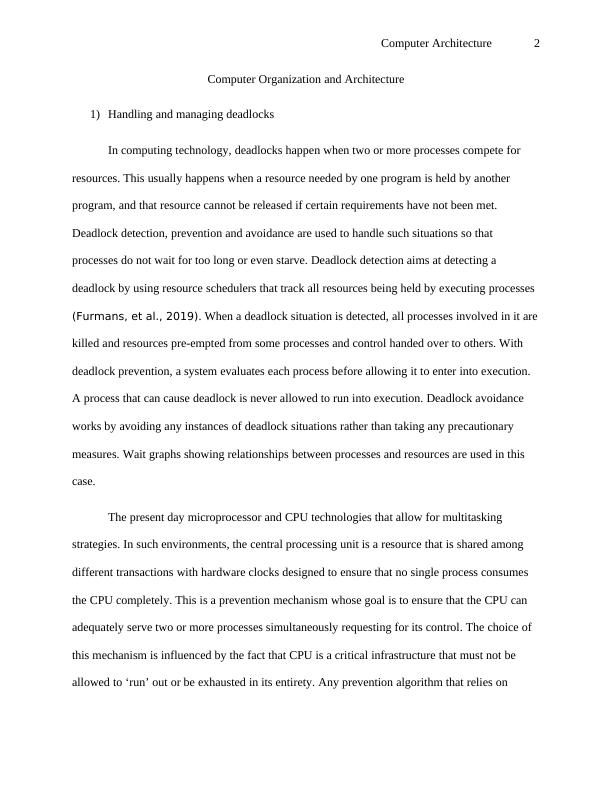Computer Architecture Article 2022
This is the subject outline for the course ICT 201 - Computer Organisation and Architecture at King's Own Institute. It provides general information about the course, including the administrative details, subject weighting, student workload, mode of delivery, and prerequisites.
9 Pages1651 Words25 Views
Added on 2022-09-27
Computer Architecture Article 2022
This is the subject outline for the course ICT 201 - Computer Organisation and Architecture at King's Own Institute. It provides general information about the course, including the administrative details, subject weighting, student workload, mode of delivery, and prerequisites.
Added on 2022-09-27
ShareRelated Documents
End of preview
Want to access all the pages? Upload your documents or become a member.
Computer Organization and Architecture Tutorial
|16
|2994
|19
Deadlock Handling Algorithms Name of the University Author
|8
|1687
|476
PC Hardware and OS Aarchitecture
|9
|1608
|51
Deadlock Detection and Prevention
|10
|1836
|11
Computer Organisation and Architecture
|15
|3260
|478
Computer Organization and Architecture
|14
|2395
|292



